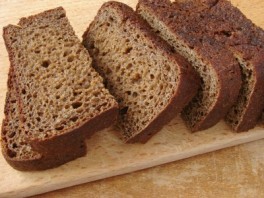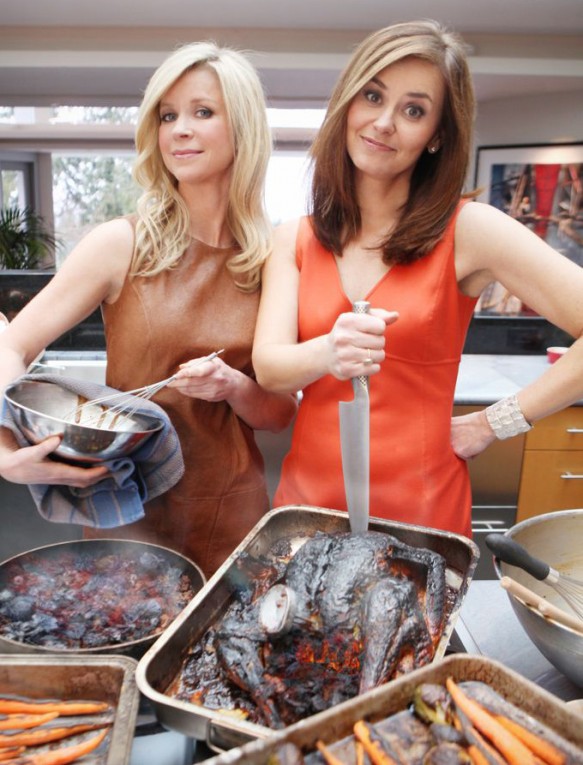
Bread
Basic and versatile, bread has been enjoyed by cultures all over the world for centuries. We talk to bakers and nutritionists to find out more about this delicious food.
The Basics
Breads are classified into three basic categories:
-
Leavened, or yeast breads are the standard loaves you see at the supermarket.
-
Quick breads are leavened with a non-yeast leavening agent like baking soda or baking powder. These agents release carbon dioxide into the dough and are much faster acting than regular yeast.
-
Flat breads are dense and unleavened. E.g. crackers, matzo and tortilla.
A light baguette, a hearty dark loaf, or everything in-between? With such a wide selection of breads available, there’s no need to stick to just one.
-
White, the standard bread, contains as much starch as any other kind of bread and retains some fibre, although not nearly as much as whole grain breads. And despite being enriched with vitamins, white bread is still one of the least nutritious breads because the flour has been processed to the point where the germ – the most nutritious part – is nearly gone.
-
Whole Meal bread is made from the whole of the wheat grain, milled to make it more digestible. Whole meal has a high level of dietary fibre, vitamins and minerals and is an excellent product if you need more fibre. It’s also good for the very young or very old as the milled wheat grains are easier to digest.
-
Whole Grain bread is similar to whole meal, but often has whole pieces of grain.
-
Multigrain bread is made from white flour with added grains to provide some texture and flavour. The fibre content is lower than whole meal but higher than white bread. Some brands of multigrain bread have more fibre than others.
-
Baguette is a long, skinny loaf made with white flour. The true, French baguette is made extra crusty.
-
Barrel bread is usually made with milk bread dough, baked in a ridged mould, also known as a pistol.
-
Challah bread is an egg enriched, braided, Jewish bread traditionally eaten around the Sabbath and at festivals.
-
Ciabatta is Italian bread made with olive oil.
-
Croissants are another French specialty; a crescent shape pastry, very flaky and light-tasting and goes well with jams.
-
Daktyla is a traditional shaped loaf from Greece covered in sesame seeds. Daktyla means fingers, named after its shape, which can be broken into finger-like pieces.
-
Focaccia is an Italian-style bread recently popularized in North America. Most types have olive oil brushed over them, and some are also sprinkled with herbs before baking. Its nutritional value is similar to white bread.
-
Fruit and Raisin breads are yeasted loaves with added raisins, sultanas (yellow raisins), mixed peel or dried fruit. They have almost no fat.
-
High-fibre bread, are white loaves made with special flour or added legume husks to increase the fibre beyond that found in regular white bread. Different brands vary in the fibre content.
-
Lebanese bread is similar to pita bread but usually larger and is used to wrap around fillings such as tabouli, hummus, falafel or salad.
-
Naan is an Indian specialty bread full of flavour and usually eaten with a range of dishes. Perfect for dipping in those yummy curry sauces.
-
Pita are flat breads made from white or whole meal flour. They usually come in a pocket form, making them excellent for sandwiches.
-
Pumpernickel is a German bread made with molasses and sometimes beer or unsweetened chocolate. Often, a mashed potato is added for body and moistness. Early versions of pumpernickel were hard to digest because of the coarseness of the rye grain used. Since then, makers of pumpernickel breads have introduced different flours and seasonings to make it more agreeable.
-
Rye bread is usually made from a mixture of wheat and rye flours. The nutritional value varies but is generally midway between that of white and whole grain. Rye is second only to white bread in popularity. For 2,000 years rye has been grown in Eastern Europe – mainly Russia, Germany and Poland.
-
Soda bread is flat, round, heavy loaves usually marked into quarters and risen with baking powder, not yeast. Soda bread originally comes from Ireland.
Grocery Store vs. Bakery Bread
Designer bakeries” are creating beautiful, delicate and delicious loaves packed with gourmet ingredients like rosemary and olive oil, cheese, figs and black olives. You certainly pay more for breads like this, but it is generally an inexpensive way to treat yourself.
What’s the difference between the $5 multigrain from the gourmet bakery and the $2 multigrain at your supermarket?
-
First, bakeries allow their bread to rise over a very long period of time – like two or three days – to allow the bread to develop more flavour and better crust.
-
Second, many mass-produced breads use preservatives and dairy fats. These help them rise faster and stay fresher longer, but do you really want to be eating these extra ingredients?
Nutrition
-
If you’re buying bread purely for nutrition, it’s very important to read the label. Many brands appear to be healthy with words on their labels like “hearty”, “natural” and “12 or 16 grains”. But turn the loaf over and read the ingredients list. If the very first words on the list aren’t “whole grain” the bread isn’t as healthy as it could be.
-
The idea that bread is fattening is a myth that developed partly because of a surge in popularity in high protein, low carbohydrate diets, and also because some mass-produced breads aren’t as healthy as they could be. But without foods like bread and potatoes, the body temporarily loses some of its glycogen (the carbohydrate stored in muscles for energy). Exercising without stores of glycogen means you will tire easily. It’s usually what you spread on your bread that’s fattening – not the bread itself!
-
In addition to being rich in complex carbohydrates, bread is a valuable source of starch. It also supplies several important B complex vitamins and dietary fibre. Research shows that fibre keeps our digestive system healthy and may help protect against certain cancers and diabetes.
-
Although we consider bread to be a carbohydrate, whole-wheat varieties are also a source of protein. With all the nutrients from the wheat left intact, whole wheat bread is truly a life-sustaining loaf. Whole wheat bread provides almost all of the natural vitamins and minerals in wheat, including niacin, riboflavin, thiamine, vitamin E, iron and calcium.
Fresh is Best
Once you get your bread home there are a few ways to preserve freshness.
-
Store your bread in plastic
-
Bread frozen in a sealed plastic bag will last for weeks. Allow to defrost in the bag.
-
If you prefer your bread extra crusty, leave it on the counter with the sliced off end turned down on the breadboard.
-
Put bread in a very hot oven for a few minutes to make it taste like you bought it fresh from the baker’s oven.










